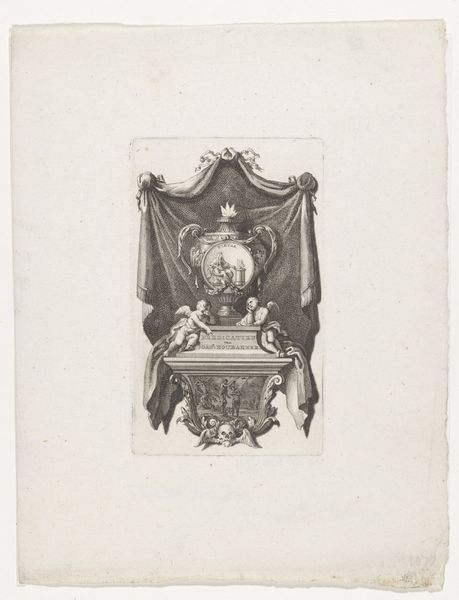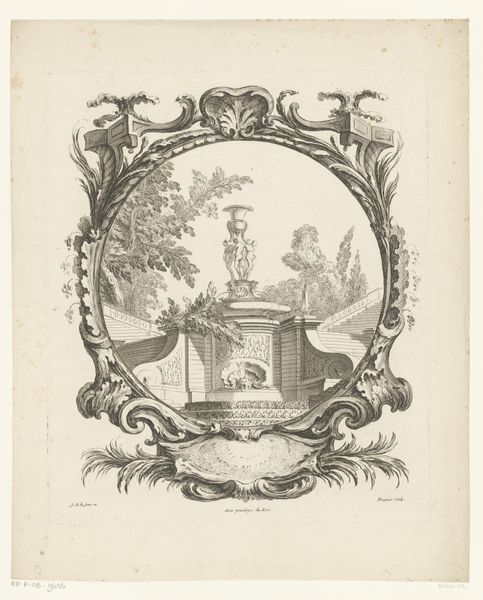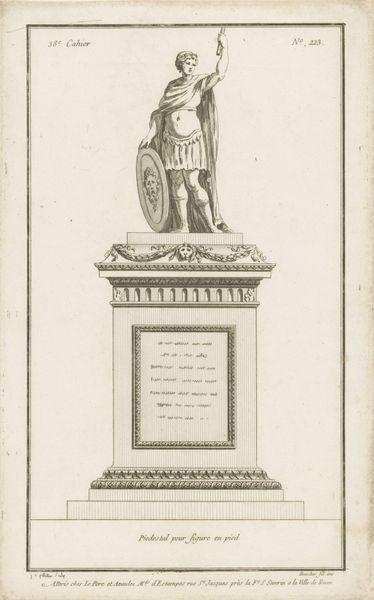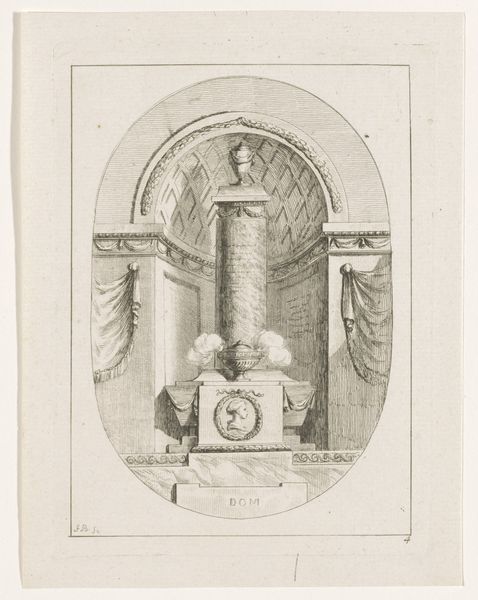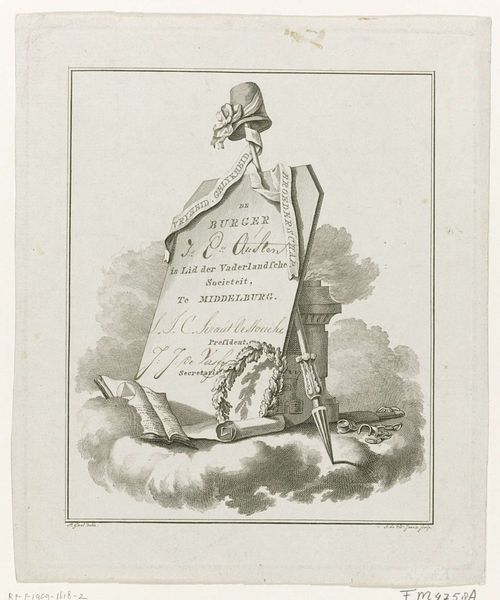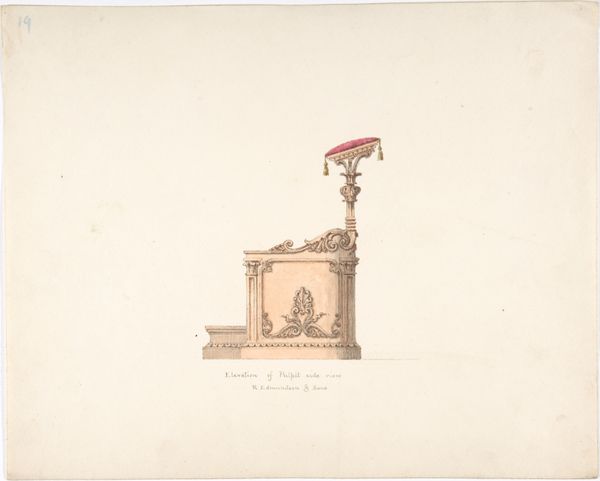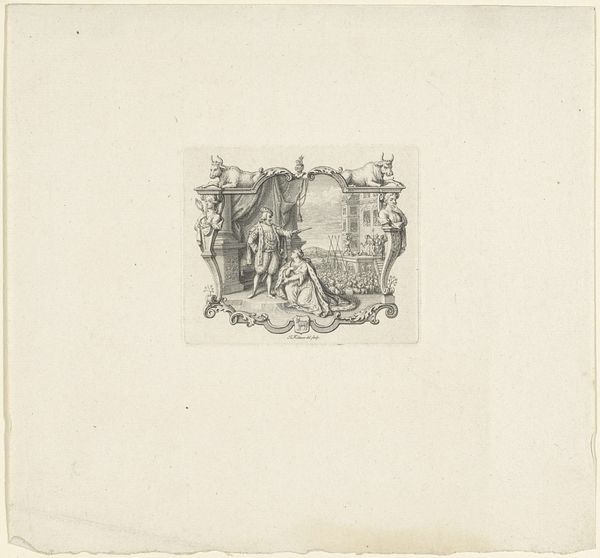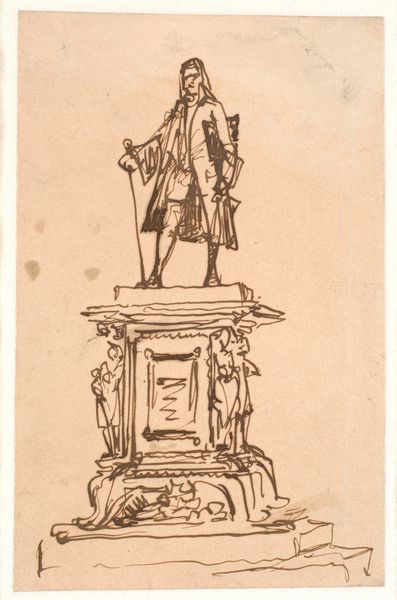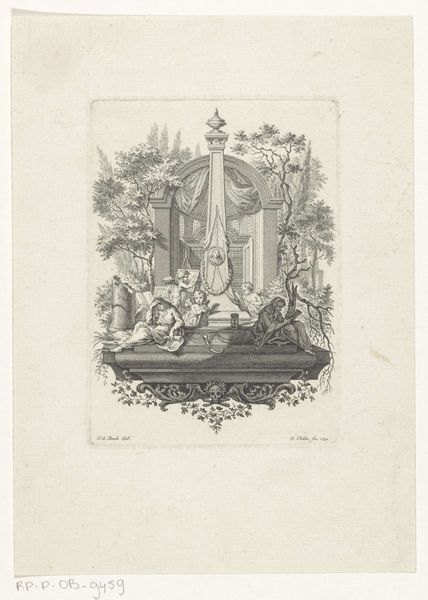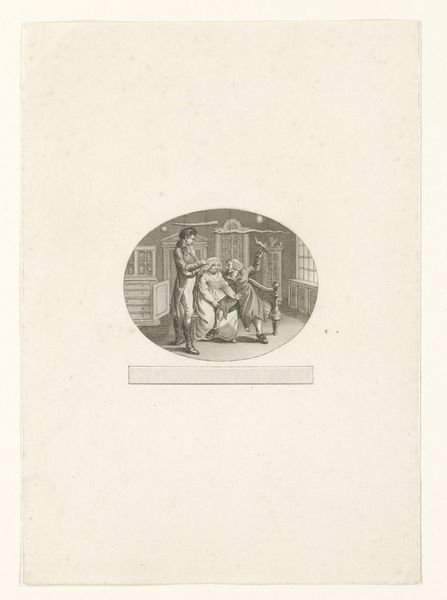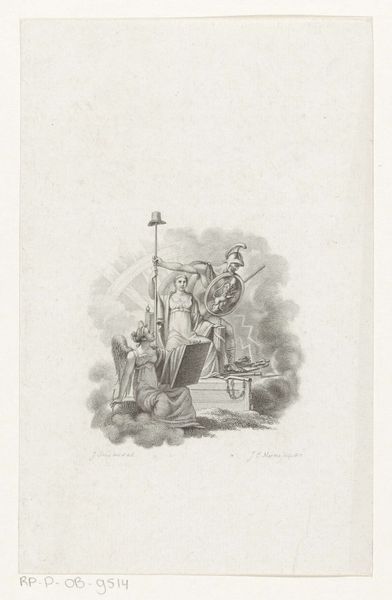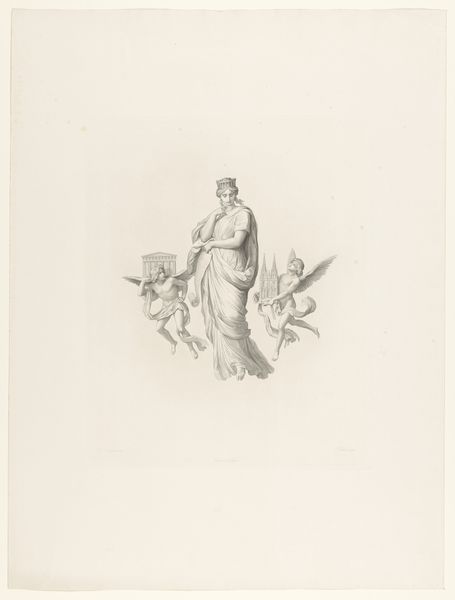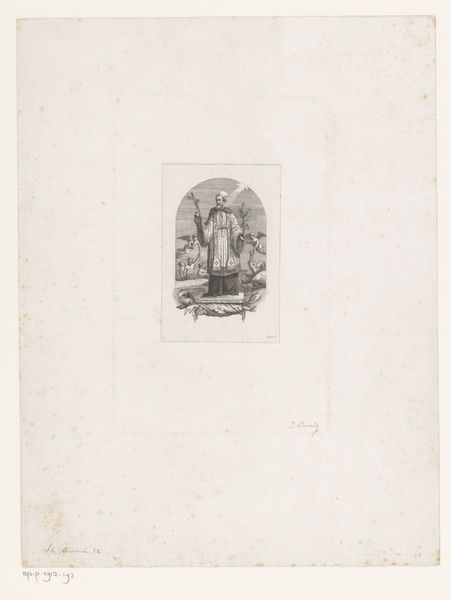
Allegorie op de overwinning in de slag bij Doggersbank, 1781 1781 - 1790
0:00
0:00
Dimensions: height 223 mm, width 153 mm
Copyright: Rijks Museum: Open Domain
Curator: I’m immediately struck by the austerity of this engraving. It’s quite small, seemingly straightforward, yet somber in tone. Editor: Indeed. This is “Allegorie op de overwinning in de slag bij Doggersbank, 1781,” created between 1781 and 1790 by Izaak Jansz. de Wit. Being housed here at the Rijksmuseum allows us to view this print within the broader context of Dutch history, particularly naval power. Let’s dig into that material history, shall we? Curator: Please do! The etching itself—the physical act of incising those lines, then printing it en masse… it implies something about its purpose. I sense it was meant for wide dissemination, for consumption. Editor: Precisely. Think about what a victory at Doggersbank meant in that moment—the Dutch Republic against the British fleet. It's not merely a historical painting; it's an allegorical representation deeply entwined with national pride, the struggle for economic independence, and perhaps more broadly, defiance against imperial power. Curator: The materiality tells a clear story too. An engraving allows for sharp detail, a way to immortalize the event cheaply and efficiently, reinforcing a nationalist narrative through accessible imagery. Who did it serve? What did people purchase it and do with it? Editor: I imagine its consumption was linked to displays of patriotism, circulated within merchant circles and naval communities. The visual language speaks to contemporary power structures and national identity. It certainly glosses over the costs. The reality of war rarely features in allegorical portrayals of victories. Curator: It's true. There’s a certain disconnect. We’re looking at the print as a cultural object. But that is very different from, say, the shipbuilders who actually had to supply the boats involved in the battle, their class, where they slept… We lose them to simplification. Editor: It forces us to consider the unseen labor and power dynamics behind what is framed as pure triumph. Its display says a lot about the culture, what it valued, and even what it was willing to omit. Curator: Looking again at the print's lines, the sharp contrasts, I now feel a clearer sense of urgency, an effort to make the event memorable but perhaps also hide or soften an unpalatable reality. Editor: I agree. Examining its materiality, along with the historical and political climate, peels away the initial gloss of victory. It prompts crucial questions about who benefits, and whose stories get lost in translation.
Comments
No comments
Be the first to comment and join the conversation on the ultimate creative platform.
